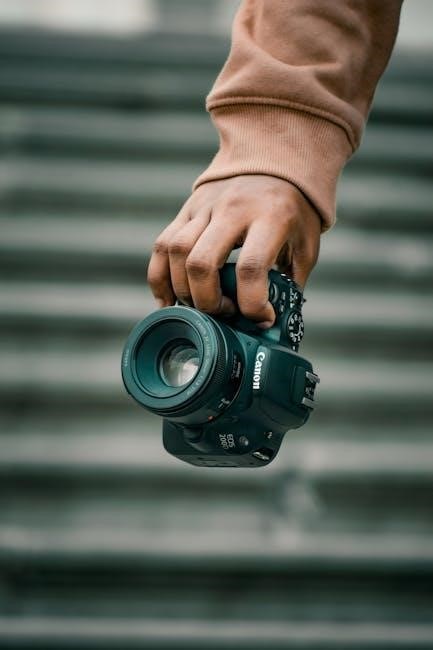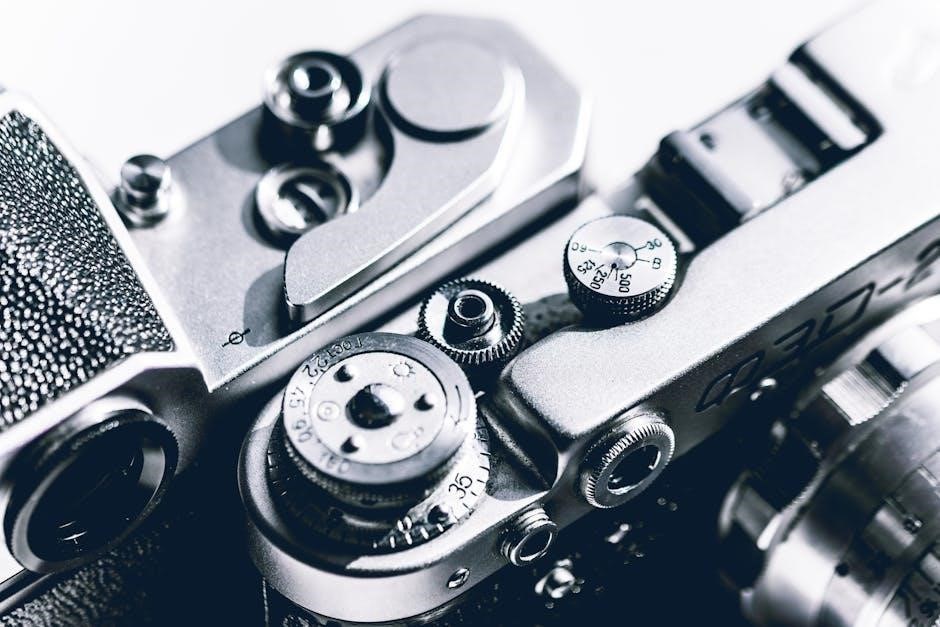Hip fractures are a significant health concern, particularly in the elderly, requiring comprehensive rehabilitation protocols. Effective postoperative care combines physical therapy with medical interventions to restore mobility and function. This article outlines evidence-based guidelines and multidisciplinary approaches for optimal recovery and patient outcomes.

Clinical Guidelines for Hip Fracture Rehabilitation
Clinical guidelines emphasize early mobilization, progressive exercises, and multidisciplinary care. The JOSPT and Physiotherapy UK 2018 standards recommend structured physical therapy, including strength, balance, and weight-bearing training, to restore function and mobility in hip fracture patients effectively.
Role of Physical Therapy in Rehabilitation
Physical therapy plays a pivotal role in hip fracture rehabilitation by addressing mobility, strength, and functional deficits. It aims to restore patients’ independence, reduce disability, and improve quality of life. Skilled therapists design personalized exercise programs tailored to individual needs, focusing on range of motion, flexibility, and muscle strength. Early mobilization is emphasized to prevent complications like joint stiffness and muscle atrophy. Techniques such as manual therapy, gait training, and balance exercises are integral to the process. Physical therapy also incorporates pain management strategies to optimize participation and adherence to the rehabilitation plan. Evidence-based practices ensure interventions are effective and aligned with current clinical standards. The therapist-patient relationship fosters motivation and adherence, ensuring a safe and progressive return to pre-injury activities. Regular assessments and adjustments to the therapy plan are made to address any challenges or plateaus, ensuring optimal recovery outcomes and long-term functional independence for patients with hip fractures.
Key Recommendations from Clinical Guidelines
Clinical guidelines for hip fracture rehabilitation emphasize a standardized approach to improve outcomes and reduce complications. Early assessment using validated tools, such as the Timed Up and Go test and the Barthel Index, is recommended to evaluate functional status and set realistic goals. Multidisciplinary care, involving orthopedic surgeons, physical therapists, and occupational therapists, is strongly advised to address the complex needs of patients. Pain management should be prioritized, with the use of analgesics tailored to the patient’s pain level to facilitate participation in rehabilitation. Guidelines also stress the importance of early mobilization and weight-bearing exercises, as delayed mobilization can lead to prolonged recovery and increased risk of complications. Patient education is another key recommendation, ensuring individuals and their caregivers understand the rehabilitation process and adhere to prescribed interventions. Finally, clinical guidelines advocate for regular monitoring of progress and adjustments to the rehabilitation plan based on individual response and evolving needs.
Timeline for Initiating Rehabilitation

The timeline for initiating rehabilitation after a hip fracture is critical to ensure optimal recovery; Clinical guidelines recommend starting rehabilitation as early as possible, ideally within the first few days post-surgery, once the patient is medically stable. Early mobilization, even in the acute phase, helps prevent complications such as deep vein thrombosis, pressure sores, and muscle atrophy. The initial phase of rehabilitation typically lasts 1-2 weeks and focuses on pain management, basic mobility, and transferring skills. By 2-4 weeks post-surgery, patients should progress to weight-bearing exercises and functional training. The subacute phase, spanning 4-6 weeks, emphasizes strengthening and balance exercises to improve functional mobility. Advanced rehabilitation, lasting up to 3-6 months, aims to restore strength, flexibility, and pre-injury functional levels. The timeline may vary depending on the severity of the fracture, surgical approach, and patient comorbidities. Regular assessment and adjustments to the rehabilitation plan ensure alignment with the patient’s progress and goals. Adhering to this timeline is essential for minimizing disability and promoting a full recovery.
Components of a Hip Fracture Rehabilitation Protocol
A comprehensive hip fracture rehabilitation protocol includes assessment, individualized exercises, assistive devices, pain management, and continuous monitoring. These components ensure a structured approach to recovery, addressing physical and functional needs effectively.
Early Mobilization Techniques
Early mobilization is a cornerstone of effective hip fracture rehabilitation, focusing on restoring movement and function shortly after injury or surgery. Techniques include passive range of motion exercises, where a therapist moves the patient’s joints, and active mobilization, where the patient engages their muscles. Bedside mobilization involves sitting up, transferring to a chair, and performing weight-bearing exercises with assistance. Early walking, even with assistive devices like walkers or crutches, is encouraged to prevent complications like deep vein thrombosis and muscle atrophy. These techniques are tailored to the patient’s pain tolerance and stability of the fracture, ensuring safety and gradual progress. Early mobilization not only enhances recovery but also reduces the risk of secondary issues such as pressure sores and pneumonia. The goal is to transition patients from bed to mobility as quickly as possible, laying the foundation for more advanced rehabilitation. Physical therapists play a pivotal role in guiding these activities, ensuring they are performed safely and effectively.
Weight-Bearing Exercises
Weight-bearing exercises are essential in hip fracture rehabilitation, focusing on restoring strength, stability, and function in the lower extremities. These exercises involve placing weight on the affected hip, either partially or fully, to stimulate bone healing and improve muscle activation. Techniques include standing exercises, where patients progress from leaning on assistive devices to standing independently, and marching in place to enhance hip and knee mobility. Partial weight-bearing exercises, such as using a walker or crutches, are often introduced early to avoid excessive stress on the fracture site while promoting gradual loading. As patients progress, full weight-bearing activities like walking on flat surfaces or using a treadmill are incorporated to strengthen the hip and surrounding muscles. These exercises are tailored to the patient’s fracture type, surgical intervention, and overall health status. Progression is monitored closely to ensure proper bone union and to prevent complications. Weight-bearing exercises not only enhance physical recovery but also help restore confidence and independence in daily activities. Regular practice and gradual progression are key to achieving optimal outcomes in hip fracture rehabilitation.
Progressive Strength Training
Progressive strength training is a cornerstone of hip fracture rehabilitation, designed to enhance muscle strength, endurance, and function. This approach involves systematically increasing the intensity of exercises over time to promote muscle adaptation and improve overall mobility. Resistance exercises, such as those using weights, resistance bands, or machines, are commonly employed to target the hip flexors, extensors, and abductors, as well as the core and lower limb muscles. Bodyweight exercises, like squats and lunges, are also integrated to strengthen the hip joint and surrounding tissues. The goal is to restore the patient’s ability to perform daily activities and maintain independence. Supervised by a physical therapist, these exercises are tailored to the individual’s progress, ensuring safe and effective advancement. Progressive strength training not only improves physical function but also reduces the risk of future fractures by enhancing bone density and overall musculoskeletal health. Consistency and gradual progression are critical to achieving optimal outcomes and ensuring long-term recovery.
Balance and Functional Mobility Training
Balance and functional mobility training are essential components of hip fracture rehabilitation, focusing on restoring the patient’s ability to perform daily activities safely and independently. This phase emphasizes exercises that improve equilibrium, coordination, and overall physical stability. Techniques such as tai chi, yoga, and single-leg standing exercises are often incorporated to enhance balance control. Functional mobility training involves practicing real-life movements, such as sit-to-stand transitions, walking, and navigating stairs, to replicate the challenges of everyday environments. Assistive devices, like canes or walkers, may be used initially to provide additional support and confidence during mobility tasks. The goal is to reduce the risk of falls and improve the patient’s ability to move efficiently in various settings. Supervised by a physical therapist, these exercises are progressed gradually, ensuring the patient can manage increasingly complex tasks. By addressing both balance and functional mobility, this training helps patients regain independence, reduce the risk of future falls, and achieve a higher quality of life post-rehabilitation.
Use of Assistive Devices
The use of assistive devices plays a critical role in the rehabilitation process following a hip fracture, particularly during the early stages. Devices such as canes, walkers, and crutches are commonly prescribed to provide additional support and stability, reducing the risk of falls and enabling patients to mobilize safely. These tools help patients gradually regain confidence in their mobility while minimizing stress on the healing hip. The choice of device depends on the patient’s weight-bearing status, mobility level, and cognitive function. For instance, a walker may be recommended for patients with significant balance impairments, while a cane might suffice for those with milder limitations. Orthotic devices, such as hip braces, may also be used in specific cases to provide structural support. The rehabilitation team ensures proper fitting and training in the use of these devices to maximize their effectiveness. As the patient progresses, the reliance on assistive devices is gradually reduced to promote independence. Regular assessment of the patient’s needs ensures the appropriate use of these tools throughout the recovery process.

Multidisciplinary Approach to Rehabilitation
A multidisciplinary approach is essential for effective hip fracture rehabilitation, involving physical therapists, occupational therapists, orthopedic surgeons, nurses, and social workers. This team collaborates to address physical, emotional, and social needs, ensuring comprehensive and personalized care to enhance recovery outcomes.
Composition of the Rehabilitation Team
The rehabilitation team for hip fracture recovery is a collaborative group of healthcare professionals, each bringing specialized expertise to address the patient’s needs. The core team typically includes:
- Physical Therapists (PTs): Focus on restoring mobility, strength, and functional movement through targeted exercises and mobilization techniques.
- Occupational Therapists (OTs): Help patients regain daily living skills, such as bathing, dressing, and cooking, to promote independence.
- Orthopedic Surgeons: Provide medical oversight, manage surgical recovery, and address any complications related to the fracture or surgery.
- Nurses: Monitor overall health, manage pain, and assist with wound care and mobility during the acute recovery phase.
- Social Workers: Support patients and families with emotional and logistical challenges, such as arranging post-discharge care or home modifications.

This multidisciplinary approach ensures comprehensive care, addressing physical, emotional, and social aspects of recovery to optimize outcomes and reduce the risk of future fractures.
Evidence-Based Practices in Rehabilitation
Evidence-based practices in hip fracture rehabilitation are grounded in clinical studies and standardized protocols to ensure effective recovery. These practices are regularly updated based on the latest research to optimize patient outcomes and reduce complications.
Best Practices Supported by Clinical Studies
Clinical studies underscore the importance of evidence-based practices in hip fracture rehabilitation. Early mobilization, weight-bearing exercises, and progressive resistance training are consistently supported by research as key components of effective recovery. These interventions improve functional outcomes, reduce hospital readmissions, and enhance quality of life.
Studies emphasize the role of multidisciplinary care, including physical therapy, occupational therapy, and medical oversight. Pain management strategies, such as multimodal analgesia, are recommended to optimize patient comfort and adherence to rehabilitation protocols. Additionally, clinical guidelines advocate for early intervention to prevent complications like deep vein thrombosis and pressure ulcers.

Research also highlights the benefits of balance and functional mobility training to reduce fall risk and improve independence. The use of assistive devices, such as canes or walkers, is supported by evidence to enhance safety during ambulation. Patient education and psychological support are equally important, as they promote adherence to rehabilitation plans and improve long-term outcomes.
Overall, these best practices, grounded in clinical evidence, aim to restore mobility, strength, and independence in patients following hip fractures, ensuring a comprehensive and effective recovery process.

Meta-Analyses and Research Findings

Meta-analyses and research findings play a critical role in shaping evidence-based hip fracture rehabilitation protocols. Studies consistently highlight the importance of early mobilization and weight-bearing exercises to restore functional mobility and reduce complications. Systematic reviews emphasize that progressive resistance training improves muscle strength and accelerates recovery.

Research also supports the use of multidisciplinary care models, which combine physical therapy, occupational therapy, and medical management to optimize outcomes. Meta-analyses have shown that these integrated approaches reduce hospital readmissions and improve long-term functional independence. Additionally, studies underscore the benefits of pain management strategies, such as multimodal analgesia, to enhance patient comfort and adherence to rehabilitation programs.
Findings from clinical trials further highlight the effectiveness of falls prevention strategies, including balance training and home safety modifications, in reducing the risk of future fractures. Overall, these research insights provide a strong foundation for developing and refining hip fracture rehabilitation protocols, ensuring that patients receive the most effective and evidence-based care.

Monitoring and Adjusting the Rehabilitation Plan
Monitoring and adjusting the rehabilitation plan is essential to ensure optimal recovery from hip fractures. Regular clinical evaluations, including assessments of pain, range of motion, strength, and functional abilities, are critical. These assessments help identify progress, plateau, or potential complications early.
Adjustments to the rehabilitation plan are based on individual patient response and goals. For example, if a patient is not progressing as expected, the intensity of exercises or the use of additional modalities, such as heat or electrical stimulation, may be increased. Conversely, if a patient exceeds expectations, the plan can be advanced to challenge them further.
The rehabilitation team collaborates to monitor patient adherence, address barriers to recovery, and modify interventions as needed. Patient education and feedback are also integral, ensuring that the rehabilitation plan remains aligned with the patient’s needs and priorities. Continuous monitoring and adjustments are vital to achieving the best possible outcomes and minimizing complications.
This iterative process ensures that the rehabilitation plan evolves with the patient’s recovery, ultimately supporting a safe and effective return to functional independence.
A multidisciplinary approach, involving physical therapists, orthopedic specialists, and other healthcare professionals, is crucial for addressing the complex needs of patients. Regular monitoring and adjustments to the rehabilitation plan ensure that individual goals are met and potential complications are mitigated.
By adhering to best practices and tailoring interventions to patient-specific needs, healthcare providers can significantly enhance recovery outcomes. Ultimately, a comprehensive and patient-centered rehabilitation protocol plays a pivotal role in helping individuals regain mobility, reduce disability, and reintegrate into their daily lives following a hip fracture.
This structured approach not only supports physical recovery but also addresses the emotional and psychological challenges associated with hip fractures, fostering a holistic path to healing and independence.










